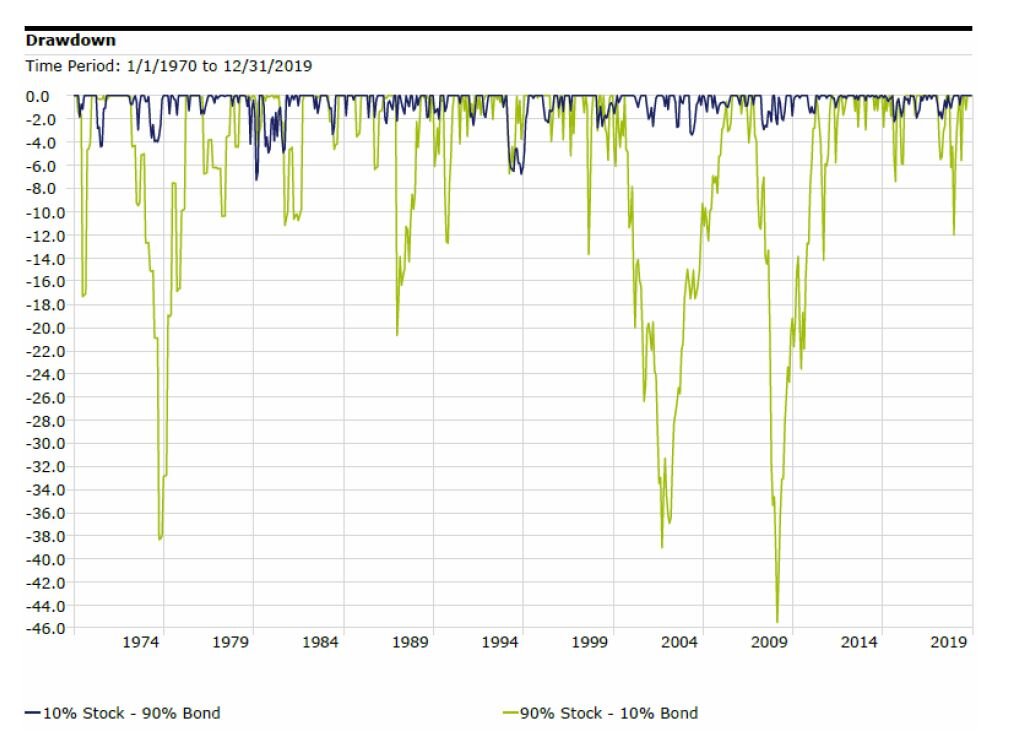The Senate recently passed the Setting Every Community Up for Retirement Enhancement (SECURE) Act. It’s a significant change in legislation for most Americans in or preparing for retirement.
The SECURE Act is the second notable financial planning-related law change in only three years! The first was in 2017 when the Tax Cuts and Jobs Act (TCJA) significantly changed our tax code. Fast forward to 2019, the SECURE Act became law on December 20th, adjusting rules related to retirement accounts. To see just one meaningful adjustment to our tax code or retirement plan rules every 10-15 years is typical; so to see a major tax code overhaul and the implementation of the SECURE Act, all in a matter of only three years, is unprecedented.
Needless to say, these changes have certainly kept your Center team on its toes! The SECURE Act contains almost three dozen sections, but for most of you, there are only a few adjustments that could impact your financial plan. Let’s dive in!
Inherited Retirement Accounts & the End of ‘Stretch’ Distributions
The new legislation changes how non-spouse account beneficiaries must distribute assets from inherited retirement accounts (IRAs) by removing the so-called ‘stretch’ provision. Most IRA beneficiaries will now have to distribute their entire inherited retirement account within 10 years of the year of death of the owner.
Tell me more…
When a non-spouse beneficiary inherited a retirement account such as an IRA, an annual Required Minimum Distribution (RMD) was required. Typically we think of RMDs occurring in our 70s and beyond but they are also present in many cases for beneficiaries of retirement accounts. If the RMD is not met by year-end, there is a stiff, 50% penalty on any funds that were not distributed that were supposed to be. When a spouse inherits a retirement account, however, there were (and still are) favorable rules in place, that in many cases, do not force the widowed spouse to take annual RMDs.
Beneficiaries of retirement accounts were allowed to 'stretch' distributions over their lifetime which meant that the IRS only required a small portion of the account to be distributed from the retirement account each and every year. For those who did not necessarily “need” the inherited dollars to live off of, this was a highly beneficial attribute of an inherited retirement account. Remember, when distributions are made from Traditional, pre-tax retirement accounts, the funds are considered taxable income to the owner and can impact one’s tax bracket for the year. However, if the beneficiary was only taking out the minimum distribution required by the IRS, the beneficiary typically did not have to worry about being pushed into a much higher marginal tax bracket.
For example:
A 100 year old could name her 2 year old great-great grandchild as the beneficiary on her IRA. When the 100 year old client died, the great-great grandchild could stretch RMDs over their lifetime – which would result in a very small taxable event for the child each year given their age. To put it mildly, the IRS was not a fan of this because it essentially allowed families to turn retirement accounts into a very powerful, multigenerational wealth preservation tool that generated very little tax revenue over an extended period of time.
How do the new rules work?
Moving forward, the ‘stretch’ provision has been eliminated for non-spouse account beneficiaries. For those beneficiaries who inherit a retirement account from an account holder who passes away in 2020 and beyond, the new standard under the SECURE Act will be the ’10-Year Rule’.
Under this 10-Year Rule, the entire IRA must be emptied by the end of the 10th year following the death of the original account owner. Unlike like previous law under the ‘stretch’ provision, there is no annual RMD, the beneficiary has full control over how much they distribute from the account. As you might suspect, this will now require a high level of strategic tax planning as a retirement account beneficiary.
Questions to ask:
Does it make sense to take distributions evenly over that 10-year time frame if income is projected to be the same for the foreseeable future? Is the beneficiary’s income dramatically lower in a particular year? If so, could it make sense to take a sizeable distribution from the IRA so the taxable income from the account is taxed at a lower rate than most other years? In my humble opinion, this makes working with a comprehensive financial planner even more critical for IRA beneficiaries given all of the moving parts clients will now have to navigate from a tax standpoint.
Roth IRA/401k/403b Accounts
We haven’t talked much about it yet but Roth IRA/401k/403b accounts are also subject to the 10-year rule, however, distributions to beneficiaries are NOT taxable. For those inheriting Roth accounts, waiting until the last minute and liquidating the account in year 10 could actually be a very smart move to take full advantage of the tax-free growth aspect of a Roth account.
What if I already have an inherited IRA that I’m taking lifetime, stretch distributions from?
If you inherited a retirement account from someone who passed away in 2019 or before, you are grandfathered into using the ‘stretch’ provision. The new, 10-year rule will NOT apply to you.
Who is exempt from the new 10 year distribution rule?
Spousal beneficiaries
Individuals who are not more than 10 years younger than the decedent
Disabled or chronically ill beneficiaries
Certain minor children (of the original account owners) but only until the child attains age 18 or 21, depending on the state of residence
501(c)(3) charitable organizations
Possible planning strategies to consider given the new 10-year distribution rule:
Roth conversions during the original account owners life to reduce taxable IRA assets.
Using pre-tax retirement accounts for spending needs to reduce taxable IRA assets in the original account owner’s estate.
If charitably inclined, the original account owner should consider utilizing the Qualified Charitable Distribution (QCD) from their IRA or name their favorite charity as the beneficiary on the pre-tax retirement account (remember, charities do NOT pay any tax when they inherit these funds).
If you have multiple beneficiaries, be strategic with who you name as the beneficiary of the various accounts you own (ex. Consider leaving pre-tax assets to a son who is in a low tax bracket but leave your Roth IRA to your daughter who is in a high bracket).
Required Minimum Distributions Age Increase
Another major headline from the SECURE Act is moving the age one must begin taking Required Minimum Distributions (RMDs) from age 70 ½ to age 72.
This gives account owners an extra 18 months of tax-deferred growth if they don’t immediately need to tap into their retirement accounts.
Keep in mind, this new rule only applies to those who turn 70 ½ in 2020 or later. If you have already attained age 70 ½ and started taking RMDs, you are still required to do so under previous rules.
Although the age for RMDs is being pushed out a bit, the age at which IRA account owners can utilize the Qualified Charitable Distribution (QCD) strategy remains unchanged at age 70 ½. Given recent tax reform and its impact on charitable planning, we were happy to hear this news.
Eliminates the age limit for making Traditional IRA contributions
The SECURE Act also lifts the age restriction on who can contribute to a Traditional IRA. Previously, once an individual reached age 70 ½, they were no longer able to contribute directly. This rule always puzzled me, because with Roth IRAs, anyone, regardless of age, could contribute to the account as along as he or she had earned income from working and was eligible to do so based on certain income limits.
While we don’t foresee this affecting a large number of Center clients, it’s on our radar, especially as this rule relates to "back-door" Roth IRA conversions.
In summary…
As with any law change affecting personal financial planning, there are still areas we are staying on top of with continued IRS guidance (ex. A 10-year rule on retirement accounts that name a trust as a beneficiary). We are committed to keeping you informed and up to speed on these changes.
Our financial planning team looks forward to having individual conversations with you soon to explain how the SECURE Act will impact your own personal financial situation. At our 2020 Economic & Investment Update Event in February, we will spend roughly 15 minutes on the SECURE Act and provide even further commentary beyond the detailed summary above. Be sure to sign up if you haven’t already.
As always, please feel free to reach out to your advisor if you have specific questions. On behalf of the entire Center team, we wish you a very Happy New Year and look forward to helping guide you and your family through the ever changing financial landscape!
Nick Defenthaler, CFP®, RICP®
Partner and CERTIFIED FINANCIAL PLANNER™
























